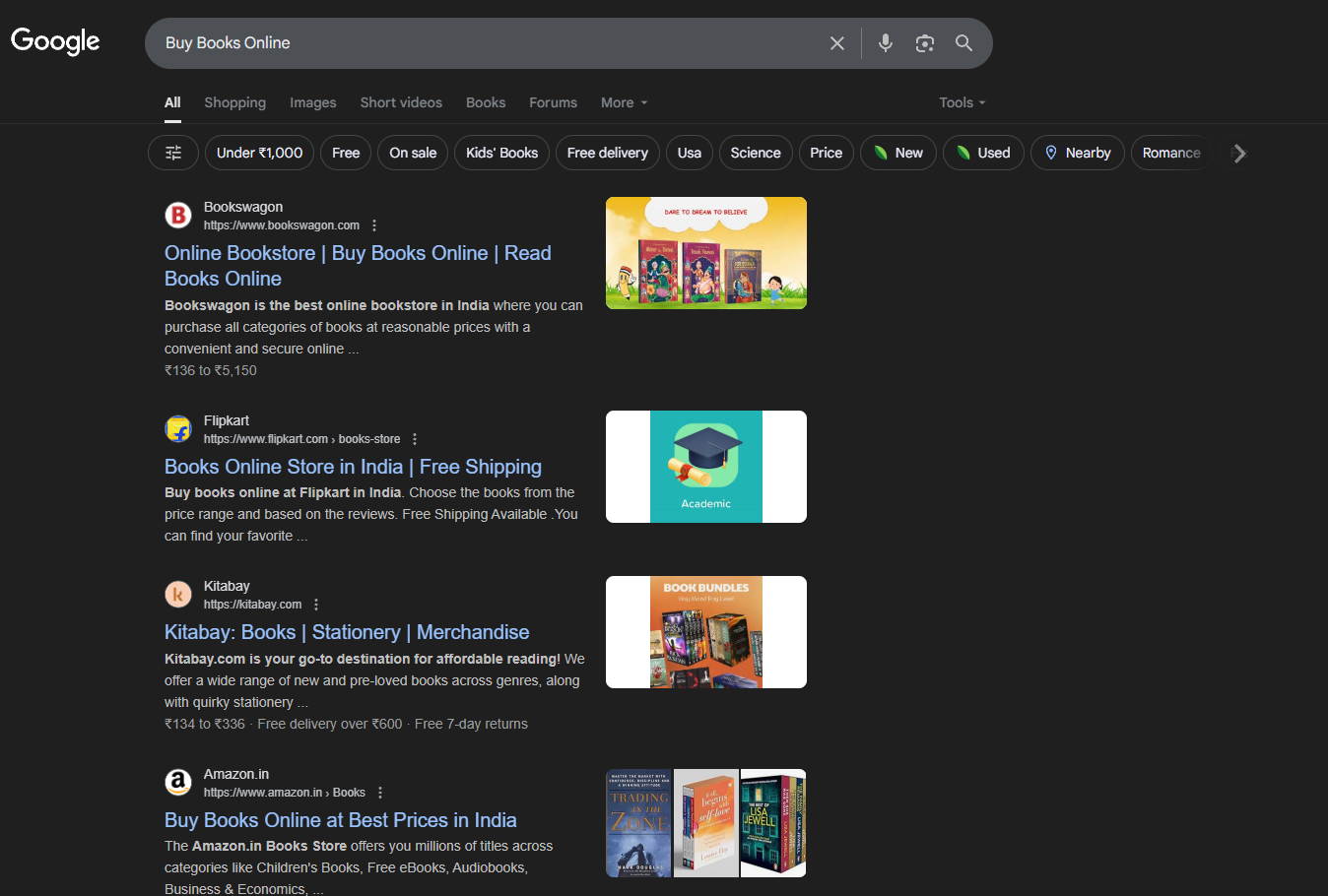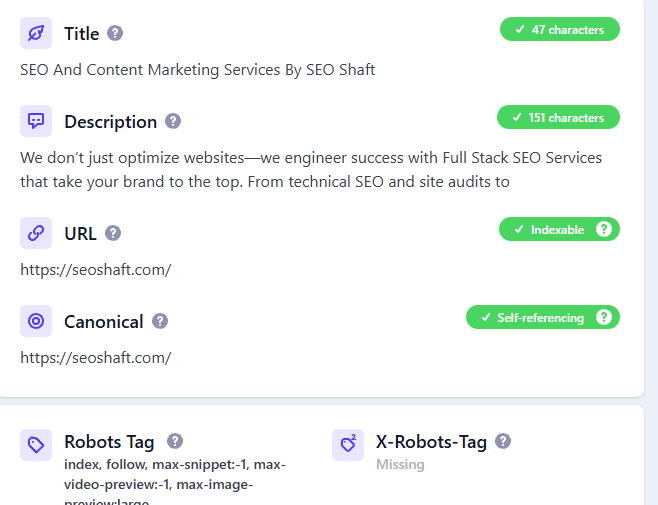What is a Main Business Keyword?
A main business keyword is the one phrase that best describes what your business offers. It’s the core search term you want your website to rank for when someone searches on Google.
Think of it this way:
If your website were a book, this keyword would be the title.
Example:
-
If you sell organic skincare products, a keyword like “organic face serum” makes more sense than a broad term like “beauty”.
-
If you’re a freelance designer, your keyword could be “freelance logo designer” instead of just “design”.
Why It’s So Important?
1. It Decides Who Finds You
Search engines match your content with people’s searches. If your keyword doesn’t match what people are typing, your site won’t show up.
Example:
If you run a yoga studio and your main keyword is just “fitness,” you’ll miss the users searching for “online yoga classes” or “beginner yoga near me” — even though they’re a perfect fit.
2. It Shapes Your Whole Website Strategy
Your homepage should focus on this keyword. Your blog, landing pages, and product categories should support it with related terms.
Think of your main keyword as the trunk of a tree.
Your other pages are branches that support and connect back to it.
3. It Helps Attract the Right Visitors
Traffic alone doesn’t grow a business — qualified traffic does. The right keyword brings people who are already looking for what you offer.
Example:
A keyword like “buy protein powder for women” will likely bring better leads than a generic term like “protein”.
How to Choose Your Main Business Keyword (Step-by-Step)
1. Get Clear on What You Offer
Be specific about your core product or service.
Ask:
What is the main thing I sell?
What exact solution do I provide?
How would a customer describe it?
Example:
“We sell pet grooming tools” → Main keyword idea: “dog grooming kits”
“We help startups with branding” → Main keyword idea: “branding services for startups”
2. Use Keyword Research Tools
These tools help you understand how often people search for terms and how competitive they are.
| Tool | Use Case |
|---|---|
| Google Keyword Planner | Find the monthly search volume |
| Ubersuggest / Ahrefs / SEMrush | Analyze competition and get keyword ideas |
| AnswerThePublic | Discover questions and search phrases people use |
| Google Search Bar Autosuggest | Type in your keyword and see what Google suggests |
What to look for:
Search Volume: 500 to 5,000 searches/month is a good range for small or new websites.
Low to Medium Competition: If your site is new, avoid high-difficulty keywords.
Commercial Intent: Choose keywords that signal buying interest.
Example:
-
Instead of
lipstick→ go withmatte long-lasting lipstick for dark skin -
Instead of
CRM→ go withCRM software for small ecommerce businesses
3. Check the Google SERPs (Search Engine Results Pages)
Now search your keyword in Google and study the results.

Look for:
-
What kind of pages show up? Product pages, blogs, videos?
-
Who is ranking? Are they big brands or small businesses like yours?
-
Are there ads? High ad presence = strong commercial intent.
If you see similar businesses ranking with well-optimized pages — that’s a good sign.
If only big platforms like Amazon, Wikipedia, or Forbes dominate — consider a more specific variation.
4. Choose Specific Over Broad
Broad keywords = more traffic but harder to rank
Specific keywords = less traffic, but more targeted and easier to win
| Too Broad | Better Choice (Specific) |
|---|---|
| “shoes” | “trail running shoes for men” |
| “marketing” | “email marketing for SaaS startups” |
| “photography” | “wedding photographer in Kolkata” |
The more specific your keyword, the better chance you have of showing up in front of the right audience.
5. Understand Search Intent
Search intent is the reason behind a query. It tells you what the user wants.
| Intent Type | Example Keyword | Best Content Type |
|---|---|---|
| Informational | “How to exfoliate face” | Blog/guide |
| Navigational | “Nike running shoes” | Brand page |
| Commercial | “Best protein powder for weight loss” | Comparison article |
| Transactional | “Buy protein powder online” | Product page |
Your main business keyword should have commercial or transactional intent, because these are the people ready to buy or contact.
6. Test, Track, and Refine
Use Google Search Console to track:

-
Impressions (how often your site shows)
-
Clicks (how many people are visiting)
-
What keywords are people using to find you
If you’re not getting the right traffic, you may need to:
-
Choose a more targeted variation
-
Update your homepage content
-
Add supporting content to build authority
Where to Use Your Main Keyword
Once you’ve selected the keyword, use it carefully and naturally in key places:

| Element | Use |
|---|---|
| Title Tag | Include the keyword early in the title |
| Meta Description | Describe what you offer using the keyword |
| H1 Tag (Main Heading) | Use the exact phrase |
| First Paragraph | Mention the keyword in the first 100 words |
| URL Slug | If applicable: yoursite.com/your-keyword |
| Internal Links | Link to your homepage using keyword-rich anchor text |
| Google Business Profile | Add a keyword in the business description and services |
Also, make sure your homepage is crawlable by search engines. If search engines can’t properly access your content, your keyword usage won’t matter.
Use tools like a Crawlability Checker by SEO Shaft.
-
Your homepage is indexable
-
There are no broken links or blocked pages
-
Your title, headers, and meta tags are being correctly read by search bots
Even the best keyword, if placed on a page that can’t be crawled, will never rank.
Key takeaways
| Step | Action |
|---|---|
| 1 | Define your main product/service |
| 2 | Research keywords (volume, competition, intent) |
| 3 | Analyze the SERPs |
| 4 | Choose a clear, specific phrase |
| 5 | Align with commercial or buying intent |
| 6 | Track performance, refine if needed |
Conclusion
Choosing the right main business keyword is not about chasing traffic — it’s about capturing demand. A strong keyword brings the right visitors, lowers your ad costs, and builds long-term visibility in Google.
If you get this step right, your entire SEO strategy becomes easier from content planning to link building to conversion optimization.



